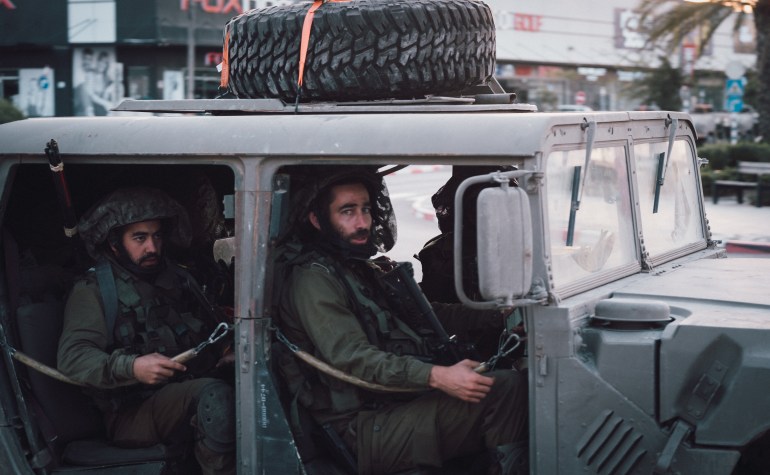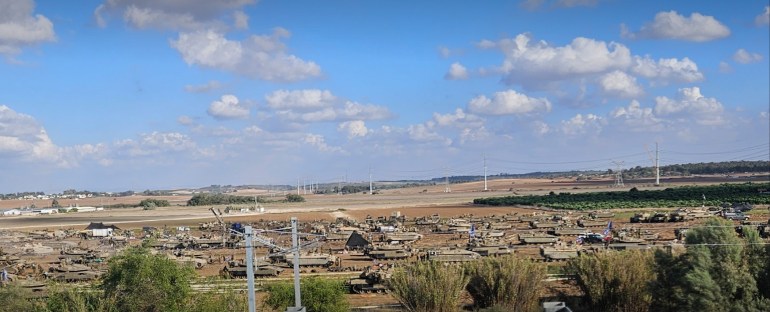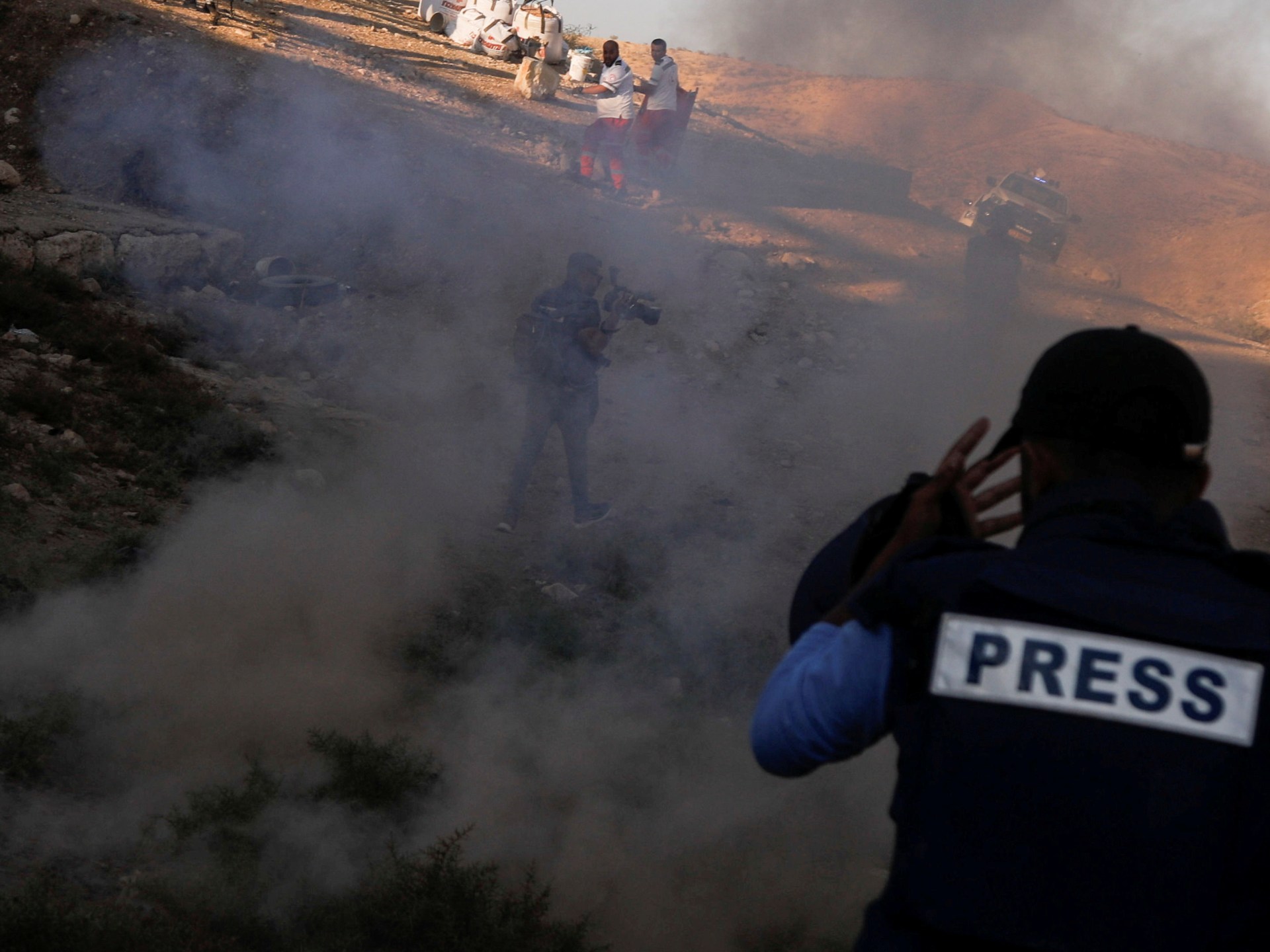Israeli forces, tanks amass at border with Gaza | Israel-Palestine conflict News
Southern Israel – At a desolate, shopping complex near the coastal city of Ashkelon, a solitary figure ambles through an empty car park.
It is eerie. All the shops are shuttered. Escalators and children’s rides are switched off. Swarms of flies feed off overflowing rubbish bins. Old food and plastic bags lie scattered across the tarmac.
The speaker system remains on and plays an endless loop of crackling elevator music – the gentle sound interrupted by the roar of aircraft overhead and several heavy thuds in the distance.
Several kilometres away lies the besieged Gaza Strip, which has been under intense Israeli bombardment for more than a week.
The impoverished enclave currently has no electricity. Fuel and water supplies are all but out. The medical system is on the brink of collapse.
Meanwhile, Israel has ordered 1.1 million people to leave the north of Gaza while it continues its air campaign.

‘We don’t know the future’
Omel, a stout 58-year-old man with a well-groomed grey beard, was born in the area and is one of the few remaining civilians to have stayed.
He had come to find some food for his 87-year-old father and brothers but all the shops closed so he walks back to his car.
He speaks cautiously, in a sombre tone, saying this current war “feels different” for locals due to the deaths and kidnapping of civilians. He himself has friends who have died.
It is estimated that 1,400 Israelis were killed in the attack by Hamas’s armed wing, including 286 soldiers. At least 2,750 Palestinians, a quarter of them children, have been killed in Israeli air raids on Gaza.
Omel’s grandfather had come from the Netherlands to a kibbutz before his birth, and now he says his family refuses to leave.
He says the attack by Palestinian fighters took locals in the area by complete surprise, leaving them still in a state of shock.
“We don’t know the future,” he says, hunching his shoulders, adding, “but, we know that the Israeli government and the army are very strong”.
Israeli military build-up by the border with Gaza
Three buses career into the car park alongside about a dozen military vehicles.
Young Israeli men dressed in military khakis disembark. The atmosphere is raucous, with plenty of back-slapping and sporadic chants. Many use the opportunity to smoke, others to take a toilet break in the unkempt shrubbery.
They appear to be some of the 360,000 reservists that Israel has called up after the surprise attack on southern Israel on October 7.

In the military vehicles, there appear to be more seasoned soldiers wearing stern expressions and kitted out in full combat gear; one of them removes himself from the crowd and begins a standing prayer.
After a 30-minute break, they depart and head onto the road towards the border with Gaza.
Some look straight ahead, others flick through their phones. One group throw an Israeli flag over the side of the vehicle as they swerve around the roundabout.
A few minutes later, rockets from the enclave fly through the air. Israeli air defences kick into action. Bright streaks of light snake their way across the blue sky. Heavy explosions ring out overhead.
The closer to the Gaza border you get, the more Israeli flags you see draped along the highway.
Speeding passenger cars filled with armed Israeli soldiers weave their way around a stream of gargantuan transport vehicles carrying tanks.
On one side of the highway, more than 100 tanks and military vehicles line up in rows facing the Gaza Strip.
The highway is chequered with makeshift checkpoints. Cantekerous soldiers order civilians to turn back and get away from the border.
On the ground, everything points to a looming ground invasion by Israeli forces.

“We started the offensive from the air. Later on, we will also come from the ground,” Defence Minister Yoav Gallant had told Israeli troops last week.
As night falls, near the now-evacuated town of Sderot where, a week ago, Israeli troops clashed with Hamas fighters, local shops, including a small blue-lit pizzeria and a bric-a-brac hookah store, are doing a roaring trade as an endless trail of soldiers loads up on supplies.
A long row of idle tanks stand silent in a gated industrial complex.
The street lights are switched off along the country roads that straddle the border with the Gaza Strip; the signposts are covered up. GPS systems often stop working.
It has been only a week since Israeli forces fought Palestinian fighters in the area, and preparations have been made to avoid another incursion.




